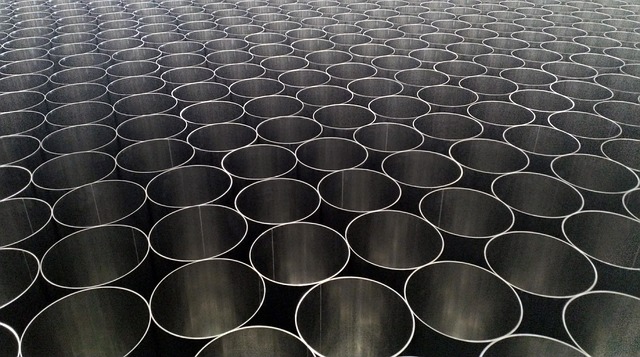Pipe insulation is crucial for protecting against frozen and burst pipes in winter. Understanding water expansion upon freezing helps homeowners choose suitable insulation based on pipe material and climate, ensuring proper installation to prevent damage. By insulating at-risk pipes, keeping faucets slightly open, performing regular maintenance, using heat tape or cables during extreme cold, and filling gaps with foam or caulk, you can effectively prevent frozen pipes and costly repairs.
Pipe insulation is an essential step in protecting your home’s plumbing from harsh winter temperatures. By understanding how it works, you can prevent frozen and burst pipes, a common and costly issue. This guide delves into the world of pipe insulation, exploring its importance, identifying risk factors, and providing practical techniques to effectively insulate your pipes and avoid costly damage. Learn how to keep your home’s plumbing system in top condition with these valuable tips on How to Prevent Frozen Pipes.
- Understanding Pipe Insulation and Its Importance
- Common Causes of Frozen Pipes and How to Avoid Them
- Effective Pipe Insulation Techniques and Best Practices
Understanding Pipe Insulation and Its Importance

Pipe insulation isn’t just about keeping your pipes at a comfortable temperature; it’s a crucial defense mechanism against one of the most common wintertime plagues—frozen and burst pipes. Understanding how and why this happens is key to implementing effective prevention strategies.
When water lines are exposed to subfreezing temperatures, the moisture within them can freeze, expanding as it does so. This expansion puts immense pressure on the surrounding pipe material, often leading to cracks or bursts. Insulating pipes helps maintain a consistent temperature, preventing freezing and reducing the risk of damage. By understanding this process, homeowners and property managers can take proactive steps, like choosing the right insulation for their specific needs (based on pipe material and climate) and ensuring proper installation, to effectively how to prevent frozen pipes.
Common Causes of Frozen Pipes and How to Avoid Them

Pipes freezing is a common issue during colder months, leading to costly repairs and inconvenient disruptions. Understanding the causes is half the battle in preventing this problem. One primary reason pipes freeze is due to lack of insulation, especially in older homes. When water inside pipes is exposed to cold temperatures without adequate protection, it can’t maintain its liquid state and turns into ice. This process expands, putting immense pressure on the pipe walls, which can eventually cause bursts.
To avoid frozen pipes, How to Prevent Frozen Pipes involves a few simple yet effective steps. Insulating pipes, especially in unheated areas like garages or basements, is crucial. Using insulation made for plumbing applications ensures optimal protection. Additionally, keeping faucets slightly open during cold snaps allows water to flow continuously, reducing the chance of freezing. Moreover, regular maintenance and inspection can help identify vulnerable pipes that might need extra insulation.
Effective Pipe Insulation Techniques and Best Practices

Effective pipe insulation involves a combination of strategic placement and high-quality materials. Start by identifying pipes that are most at risk of freezing, typically those exposed to external temperatures or located in unheated areas. Wrap these pipes with insulation specifically designed for outdoor use or areas with temperature fluctuations. Ensure the insulation is securely fastened to prevent shifting, which can reduce its effectiveness.
Best practices include using adequate thickness—typically 1.5 to 2 inches—and filling any gaps or openings around pipes with insulating foam or caulk. Regular inspection is crucial; check for signs of damage, moisture accumulation, or thermal bridges that could compromise insulation. During extreme cold snaps, consider additional measures like heat tape or electric heating cables to provide extra protection for vulnerable sections.
Pipe insulation is a vital step in preventing frozen and burst pipes, especially during colder months. By understanding the common causes of pipe freezing and implementing effective insulation techniques, homeowners can protect their plumbing systems. Regular maintenance and the use of high-quality insulation materials are key to ensuring your pipes remain intact and prevent costly repairs. Following these best practices, you can rest assured that your plumbing is prepared to withstand any seasonal changes, keeping your home safe from frozen pipe disasters.
